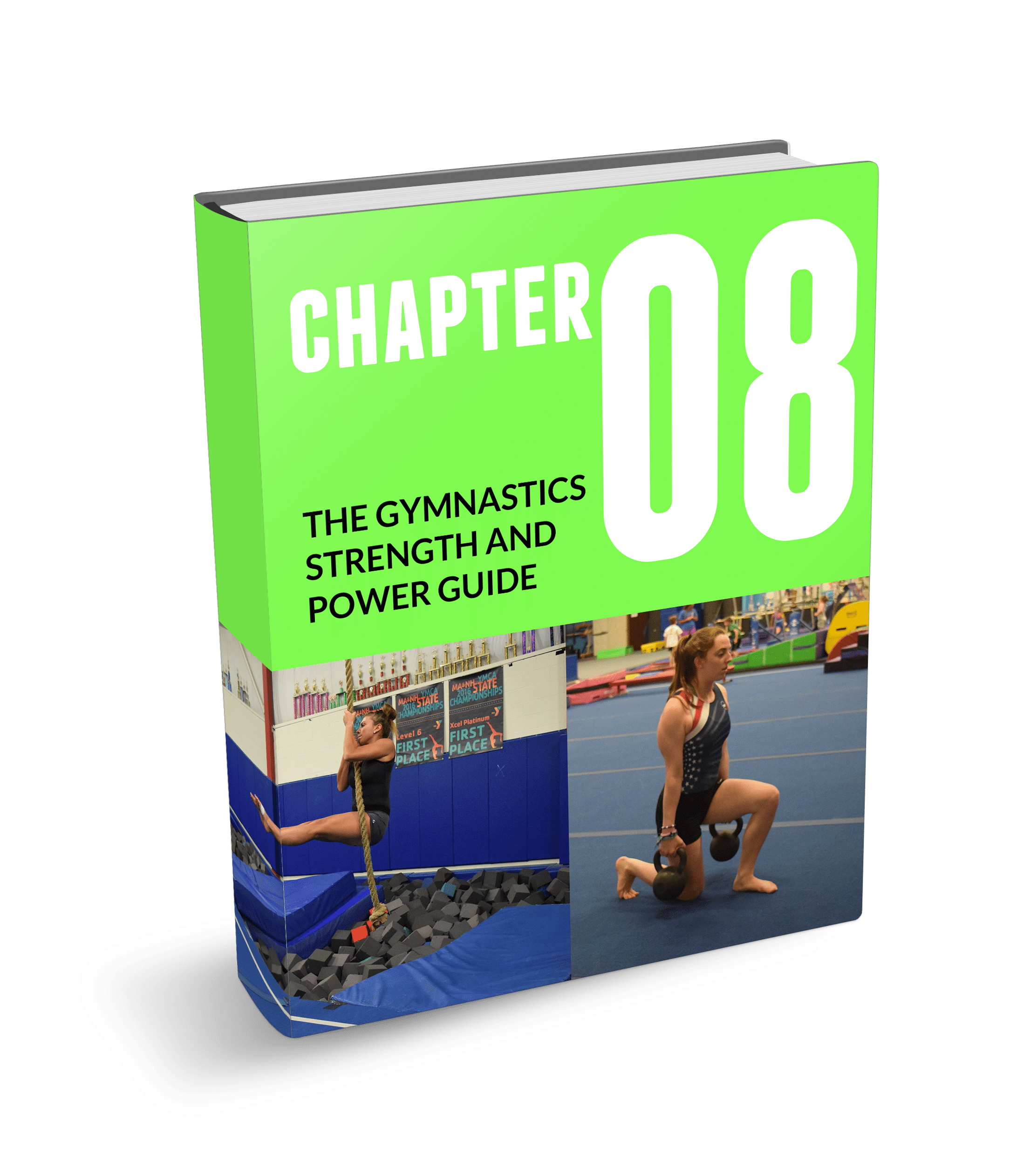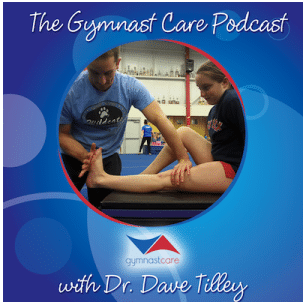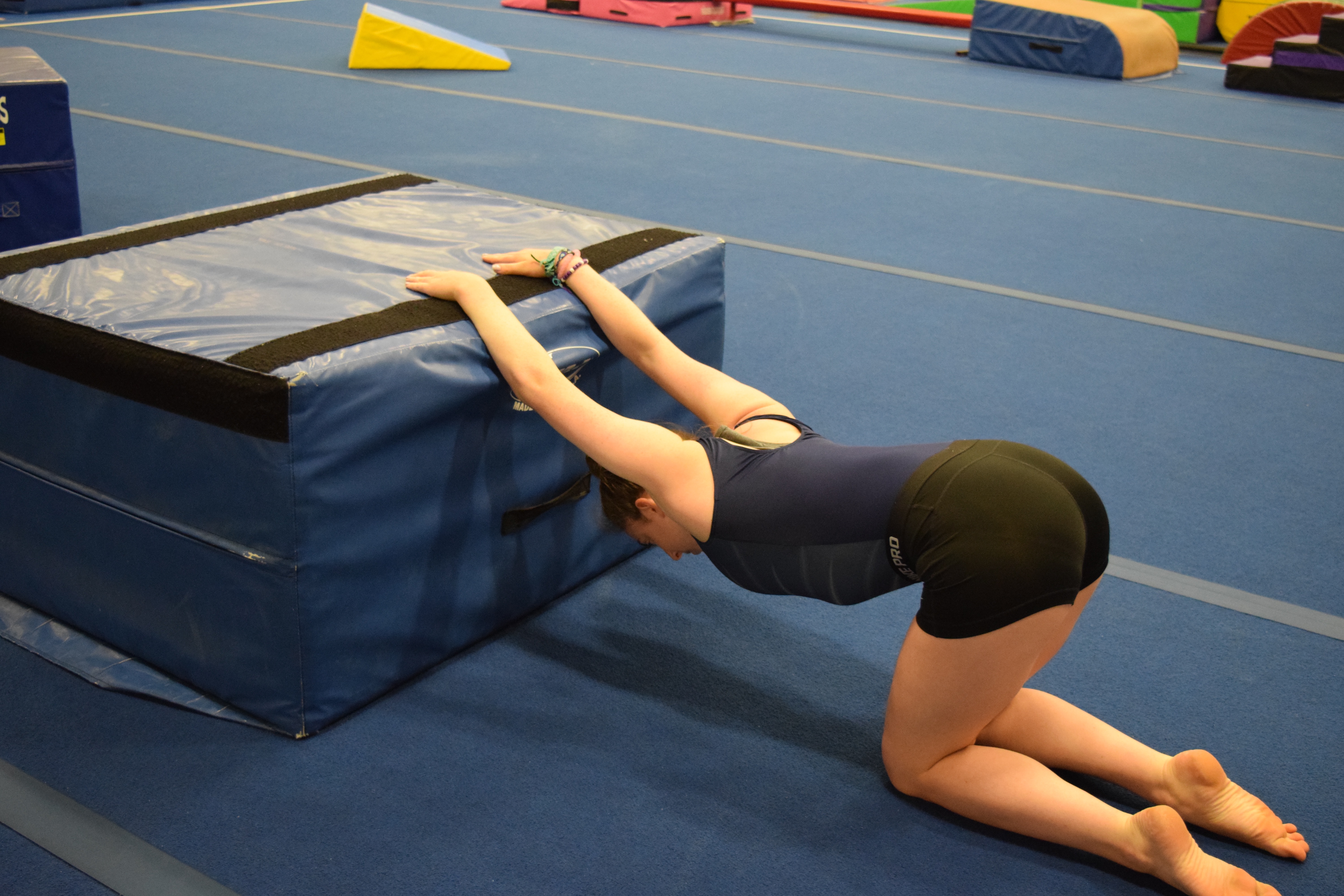An Essential Hip Strength Exercise All Gymnasts Need – Weighted Single Leg Hip Lifts
During the months of June and July, most gyms are going pretty hard on new strength programs to build strength and power needed for new skills. I’m in the same boat, doing quite a bit of progressive strength work in the gym and also with all of my gymnastics clients at Champion doing their summer training.
I’ve been lucky to see and study a lot of gymnastics strength programs over the last five years. There is typically no lacking squatting or anterior chain (quad, inner thigh, calves, etc) work being done. What I do commonly see is a huge imbalance or lack of attention to direct glute training (glute max, glute medius, glute minimus). Typically if they are in a gymnastics strength program, they are being done at an intensity that isn’t nearly as challenging as the athletes need or is being done at 1/4th the volume of squatting, jumping or other quad dominant exercises.
To help people out, I wanted to share an absolute staple exercise in all gymnasts I work with. They are weighted single leg hip lifts (also called hip bridges). I wrote about this a few years back, but wanted to repost due to how important it is. Here’s a video of them,
Before I explain more on this, I want to make sure I mention that people can read about everything I think about for gymnastics strength and conditioning programs in my new (free) e-book that came out recently. There are entire individual chapters for strength/power, flexibility, and cardio training. You can download it for free here

Changing Gymnastics Culture:
Reflections, Lessons, and Thoughts for the Future
By Dr. Dave Tilley DPT, SCS, CSCS
*Over 13,000 Downloads Worldwide*
How to Perform Single Leg Hip Lifts
- As you can see above, these are still new for these gymnasts so they are learning the ideal form, and are also starting with very lightweight (but need to slow down a bit!).
- Have the gymnasts place their upper back on a low block (that is against a secure object to not slide)
- Keep one leg down on the ground (typically bent above 90 degrees to reduce hamstring activity or cramping – read more here) and with a weight on the hip crease flex the opposite hip up. This helps to prevent excessive lower back arch and to help cradle the weight, and also to encourage
- Keeping the core engaged/flat, and the chin tucked to neutral, press down through the heel of the bottom leg and extend the hip upward fully aiming to engage the glute at end range, hold for 1 second, then return to the start
- Aim for 3-4 sets of 8-12 with an appropriate weight based on the athlete’s ability, mixed in with other exercises throughout the week
- There are many great progressions including using a barbell for double leg hip lifts, using variable resistances on single legs, or progressing to kettlebell swings. All can come down the road. I find single leg versions like this are the easiest to start with.
Ever since learning about hip lift variations from strength and conditioning friends of mine, I have found this is one of the most effective ways to build direct hip strength that gymnasts need for increased jumping power, hip flexibility, reducing the amount of overextended lower back posture many gymnasts develop, and also as one factor to help reduce the risk of back pain.
It’s worth noting, that this is only one piece of a leg program that should be going on in gymnastics. For one, most research supports a variety of glute and hamstring exercises be used for various muscles to be recruited or strengthened (read more here, here, here, here, and here).
This being said, it’s essential gymnasts are doing anterior chain based exercises like lunges, step ups, lateral squats, or double/single leg squats. A global program that incorporates these help build a great strength base of single leg as well as double leg hinging, squatting, and rotational capacities.
If you want to learn exactly how I think about and build gymnastics strength programs, be sure to download my Gymnastics Strength Guide for free here,

The Gymnastics Strength
and Power Guide
- Methods and exercises for increasing strength and power in gymnasts
- Explanations on why gymnasts should use both weight lifting and body weight strength
- Teaches concepts of planning, specific sets or reps, and planning for the competitive year
We take our privacy seriously and will never share your information. Click here to read our full privacy policy.
Give it a shot and hope it helps! Have a great week,
Dave
Dave Tilley DPT, SCS, CSCS
CEO/Founder of SHIFT Movement Science









